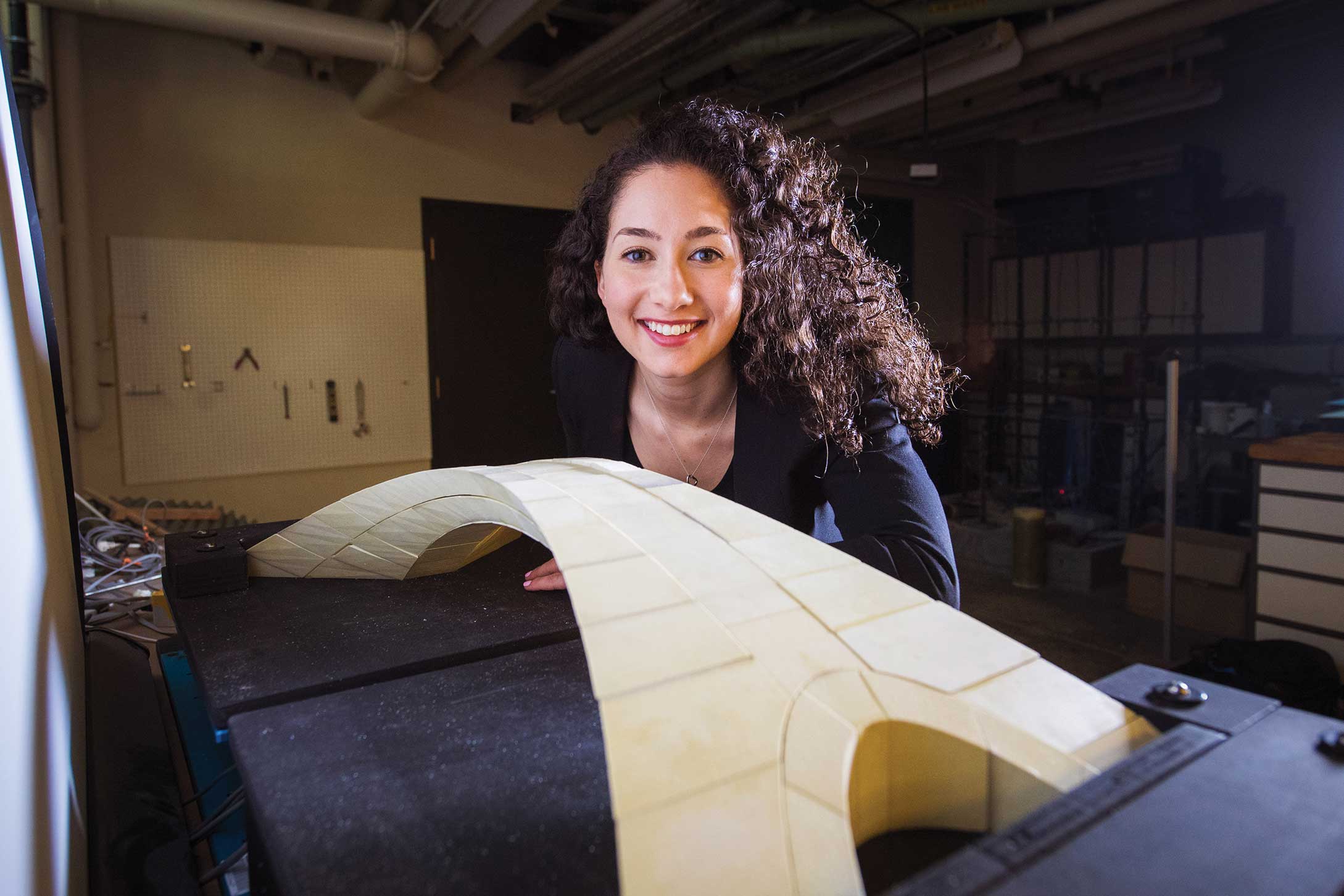A bridge to the 16th century

In 1502, Sultan Bayezid II sent out the Renaissance equivalent of a government RFP (request for proposals), seeking a design for a bridge to connect Istanbul with its neighbor city Galata. Leonardo da Vinci, already a well-known artist and inventor, came up with a novel design for what would have then been the world’s longest bridge.
He didn’t get the job. But 500 years after his death, MIT researchers have determined that his concept would have worked.
Recent graduate student Karly Bast, MEng ’19, undergraduate Michelle Xie, and John Ochsendorf, a professor of architecture and of civil and environmental engineering, analyzed the available documents, the materials and construction methods of the time, and the geological conditions at the proposed site before building a model to test the structure’s performance. The results were presented in October at the conference of the International Association for Shell and Spatial Structures and featured on Nova on November 13.
In Leonardo’s time, most masonry bridge supports were conventional semicircular arches; 10 or more piers would have been required to support a bridge that would have been about 280 meters long. “It’s incredibly ambitious,” Bast says. “It was about 10 times longer than typical bridges of that time.” Leonardo’s concept was dramatically different: a single flattened arch tall enough to allow a sailboat to pass underneath with its mast in place. It also featured an unusual way of stabilizing the span against lateral motions: abutments that splayed outward on either side, like the wide stance a standing subway rider might adopt to balance in a swaying car.
Leonardo provided no details about materials or construction methods, but Bast and the team concluded that the bridge could only be made of stone, because wood or brick could not have carried the loads of such a long span—and that like classical masonry designs such as those built by the Romans, it would have stood on its own under the force of gravity, without any fasteners or mortar.
To prove it, they built a model at a scale of 1 to 500, producing 126 individual blocks on a 3D printer. And when they added the final block, the keystone at the very top of the arch, the bridge stood up. It’s “the power of geometry” that makes it work, Bast says. “This is a strong concept. It was well thought out.”
To test the structure’s resilience to horizontal motion, Bast and Xie built the bridge on two movable platforms and moved one away from the other, simulating the movement that might occur as the foundation settled in weak soil. It performed well, deforming only slightly until being stretched to the point of collapse.
The design may not have practical implications, Bast says, since many options for lighter, stronger designs are available now. But it demonstrates, she says, that “you don’t necessarily need fancy technology to come up with the best ideas.”
Keep Reading
Most Popular
Large language models can do jaw-dropping things. But nobody knows exactly why.
And that's a problem. Figuring it out is one of the biggest scientific puzzles of our time and a crucial step towards controlling more powerful future models.
How scientists traced a mysterious covid case back to six toilets
When wastewater surveillance turns into a hunt for a single infected individual, the ethics get tricky.
The problem with plug-in hybrids? Their drivers.
Plug-in hybrids are often sold as a transition to EVs, but new data from Europe shows we’re still underestimating the emissions they produce.
Stay connected
Get the latest updates from
MIT Technology Review
Discover special offers, top stories, upcoming events, and more.